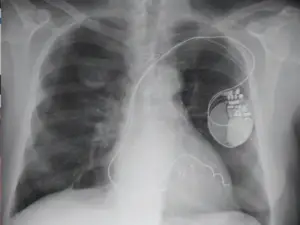Epithelioid Mesothelioma
Epithelioid Mesothelioma
Epithelioid mesothelioma is generally a disease of older adults with more than 90% of cases being diagnosed after the age of 50. Epithelioid mesothelioma has one of the best prognosis, and most of the chemotherapeutic drugs work well against this type of cancer. Here we will see how.
Mesothelioma is divided into three categories according to cell types. These three types are epithelioid, sarcomatoid, or biphasic.
Cell type of mesothelioma is decided after examination of the cancer tissue under the microscope, that is through histological examination. It is vital to find out the cell type, as the prognosis of mesothelioma is highly dependent on it. With that procedure is how we arrive to recognize epithelioid mesothelioma.
Among all the cell types epithelioid is the most common form that is found in about 60-70% of all the cases. Cells in epithelioid mesothelioma have a specific elongated pattern that is easily distinguishable under the microscope.
Differential Diagnosis Of Epithelioid Mesothelioma
Epithelioid Mesothelioma has to be differentiated from another common cancer of the lungs called adenocarcinoma. The problem in differentiation arises due to the fact that both epithelioid mesothelioma and adenocarcinoma emerge from the so-called epithelium cells. Epithelium cells are very common in our body, lining all the mucus-producing body linings.
It is vital to differentiate between epithelioid mesothelioma and adenocarcinoma as they have entirely different treatment protocols. Fortunately, researchers have come up with lots of newer stains for making this differentiation activity easier, like immunochemistry, described below.
Immunochemistry For Accurate Differentiation And Recognition Of Epithelioid Mesothelioma
So here is where immunochemistry comes into the scenario to facilitate the diagnosis of epithelioid mesothelioma.
Traditionally, electron microscopy and staining of hyaluronic acid have been used. However, nowadays immunochemistry markers are the more precise method of differential diagnosis. But things are not that simple as no single immunohistochemical marker may confirm the diagnosis of the particular type of cancer. Mesothelin, calretinin, or cytokeratin 5/6 some of the commonly used immune markers.

Where Does Epithelioid Mesothelioma Occur?
More than 80% of cases of epithelioid mesothelioma are found in the lungs, the abdominal cavity is the next common location.
Pathogenesis Or Development Of Epithelioid Mesothelioma
Mesothelioma develops quite suddenly in most of the cases. One of the problems with it is difficulty in early diagnosis. Radiological or imaging tools only work when the cancer has already advanced. There are no blood tests or so-called serum biomarkers that could help in the early detection of cancer. Epithelioid mesothelioma usually grows at locations from where it spreads very quickly. Thus there is a very short time in which it progresses.
Asbestos exposure is the most significant culprit in the development of epithelioid mesothelioma. In practice, more than 80% of cases have some history of asbestos exposure in the United States, which paved the way for all kinds of legal actions, individual or collective actions. Thin fibers of asbestos are inhaled into the lungs, and they penetrate into the pleural space. Asbestos is known to cause inflammation, cell death, in pleural space.
Due to multiple exposures, some of the pleural cells may mutate to cause cancer, though why this happens is not fully understood. But it is thought that mesothelium cells are more susceptible to asbestos as compared to other cells. But again there is an unexplained paradox since asbestos kills mesothelium cells quickly, how should cancer develop at all is not understood completely.
Staging and Prognosis
How long the person diagnosed with epithelioid mesothelioma would survive would depend significantly on the stage of the cancer. The most commonly used staging method used is called the TNM method.
In TNM, T stands for the size of the tumor, N says about the amount of involvement of nearby lymph nodes. Whereas M stands for metastasis, it tells us about how far cancer has spread from the primary site.
It is common for us to hear that a patient has stages 1 to 4, which is in most cases accumulation or an average of the TNM system.
Staging is done with the help of physical examination, imaging, and histological examination. In some cases, the staging of the epithelioid mesothelioma condition may be corrected after the surgery.
Epithelioid mesothelioma is indeed a type of cancer with the best prognosis, with almost half of the patient can expect to survive after 3-years of diagnosis, in comparison around 5-7% would survive for three years in other subtypes of mesothelioma. If diagnosed early small number of cases can expect the long-term remission of the cancer.
Epithelioid Mesothelioma Diagnosis And Symptoms
Symptoms Of Epithelioid Mesothelioma
The symptoms of epithelioid mesothelioma would vary, depending greatly upon the location of the tumor.
Thus if the mesothelioma is present in the pleural cavity, where it can be also a case of pleural mesothelioma, the symptoms would be a cough, chest pain, hoarseness of voice, fever, fatigue, unintended weight loss, difficulty in breathing, and swelling of the face or upper limbs.
In the case of location in abdominal cavity symptoms would be: pain in the abdominal region, in some cases there could be visible swelling in the abdomen, changes in the bowel movement like constipation, nausea, and vomiting.
Imaging is usually the first thing that any doctor would do on suspicion of cancer in general, and mesothelioma as a type of cancer. Ultrasound, MRI, CT scan, chest X-ray are some of the commonly used imaging methods. In most cases there would be multiple imaging, as after some kind of cancerous formation has been found, specialists would carry out additional, more specific imaging to confirm the diagnosis.
Biomarkers– looking for specific biomarkers in the blood is one of the tests that many cancer specialists would use, mainly because of the ease of such tests. mesothelin-related peptides (SMRPs) are the most specific by-products of mesothelioma that can be detected in the blood. Though biomarkers may be easy to use, but they are not very accurate.
Biopsy– histological examination of the tumor or formation remains the golden standard for confirmation of the diagnosis. It is the most accurate test not only for verification of mesothelioma but also in differential diagnosis and identifying the sub-types.
These three ways of identification of symptoms: imaging, biomarkers, and the biopsy are also used for cancer in general and not just for epithelioid mesothelioma in particular.
Early Diagnosis: How Can Epithelioid Mesothelioma Be Diagnosed Earlier?
Considering that it is a rare form of cancer, mass screening is not practicable. But regular testing can be done in those with proven long-term exposure to asbestos, especially in the age group above 50. Screening can be done with routine chest imaging and blood tests for mesothelioma specific markers.
Epithelioid Mesothelioma Treatment
We have two articles dedicated exclusively to mesothelioma treatments: This one and this one. in those articles, there are all the treatments explained in detail for all types of mesothelioma.
In most cases of epithelioid mesothelioma, multimodal treatment would be the best option, which means a combination of surgery, radiotherapy, and chemotherapy. This applies to other types of mesothelioma as well, as we explained here thoroughly.
SURGICAL TREATMENT
Surgical treatment would depend on the location of cancerous formation. In case of lungs it could involve partial removal of pleura or in more advanced cases even partial lung rejection along with more widespread removal of surrounding tissues.
The scope of the surgical operation would differ for each individual case. Similarly, in the case of abdomen cancerous tissue, it would be removed surgically. In the abdomen, HIPEC (Hyperthermic intraperitoneal chemotherapy) may also be used, which involves sterilization of the abdominal cavity by circulating the anti-cancer drugs at a higher temperature, which increases their effectiveness both due to higher concentration and temperature when compared to intravenous therapy.
RADIATION THERAPY
Radiation therapy is something that would be used in most cases to shrink the tumor, either before or after the surgery. Radiation therapy is also used to decrease the pain related to cancer. Radiation therapy is a non-invasive therapy for the treatment of epithelioid mesothelioma.
CHEMOTHERAPY
Chemotherapy, which involves using the drugs to kill the cancer cells is the most commonly used treatment. It is generally used in any stage of the disease to either gain long-term remission or at least prolong the life. Chemotherapy drugs are known to be toxic and thus having a plethora of undesired side effects.
Read more about this treatment, in this article.

INMUNOTHERAPY AND CELL THERAPY
Finally, there is a range of emerging therapies that promise to be effective and safer, like immunotherapy, and cell therapy.
See more about the epithelioid mesothelioma treatments in these articles.
Conclusions About Epithelioid Mesothelioma And Further Reading
Mesothelioma is among the rare type of cancers, that is responsible for less than 1% of new cancer cases each year. It is a type of cancer that has shown a strong relation to the asbestos exposure and thus is found most commonly in lungs. Apart from asbestos exposure, common in some factories, certain types of viral infections are considered to be among the reasons of this cancer.
Mesothelioma is generally divided on the basis of its location and cell types. Mesothelioma is the cancer of outer serous layer of internal organs like heart, lungs, intestines, and testicles. As per site, lungs are affected most commonly with 80% of all cases of mesothelioma, followed by abdomen. Epithelioid mesothelioma is one of the most common types of condition.
Mesothelioma is an aggressive kind of cancer, that is usually difficult to diagnose in early stages and hence is characterized by poor prognosis, with most patients not surviving two years after the diagnosis.
References
- AJCC – What is Cancer Staging? https://cancerstaging.org/references-tools/Pages/What-is-Cancer-Staging.aspx in relation to epithelioid mesothelioma. Accessed April 2, 2020.
- Can Malignant Mesothelioma Be Found Early? https://www.cancer.org/cancer/malignant-mesothelioma/detection-diagnosis-staging/found-early.html. Accessed April 2, 2020 for the topic related to epithelioid mesothelioma
- Robinson BW, Musk AW, Lake RA. Malignant mesothelioma. The Lancet. 2005;366(9483):397-408. DOI:10.1016/S0140-6736(05)67025-0.
- Sekido Y. Molecular pathogenesis of malignant mesothelioma. Carcinogenesis. 2013;34(7):1413-1419. DOI:10.1093/carcin/bgt166.
- Inai K. Pathology of epithelioid mesothelioma. Environ Health Prev Med. 2008;13(2):60-64. DOI:10.1007/s12199-007-0017-6.
- Ordóñez NG. The Immunohistochemical Diagnosis of Mesothelioma: A Comparative Study of Epithelioid Mesothelioma and Lung Adenocarcinoma. The American Journal of Surgical Pathology. 2003;27(8):1031.






